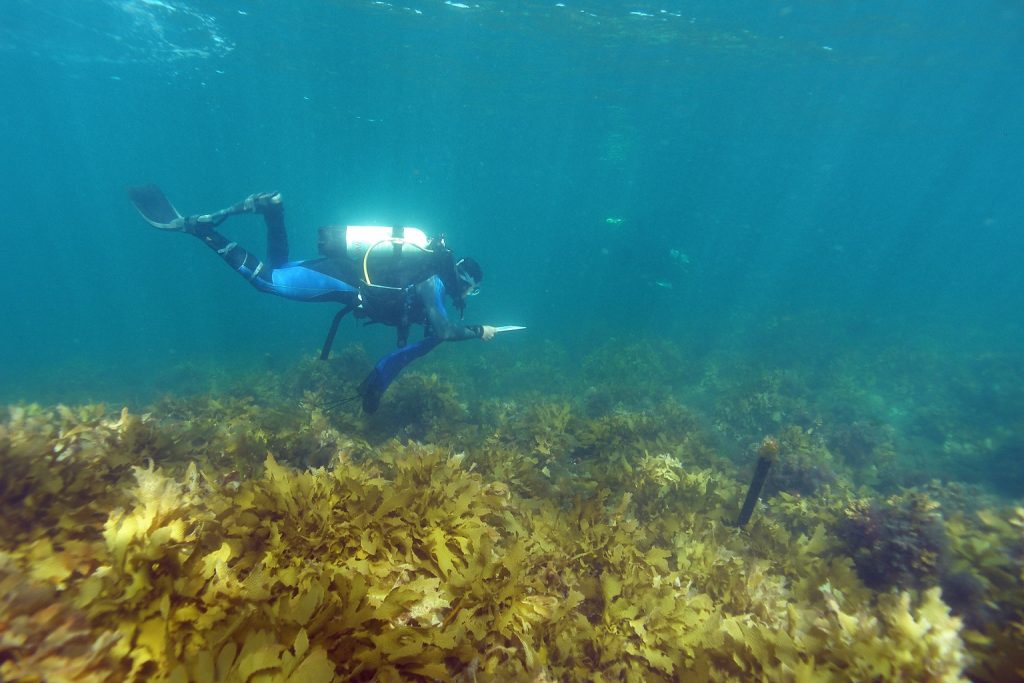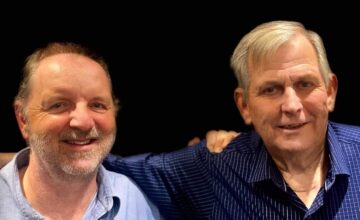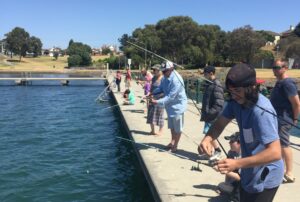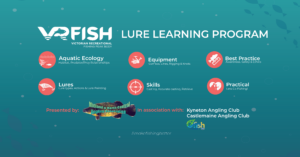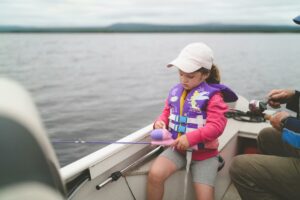March 5, 2019
Purple sea urchins are causing havoc to our fish habitats in Port Phillip Bay by wiping out kelp forests leaving reefs barren. Thankfully, the destructive purple sea urchins are being removed as part of a trial cull led by ecologists at Deakin University which will focus on Jawbone Marine Sanctuary and Point Cooke Marine Sanctuary. Over the past decade, the once rich kelp forests have turned into a barren, with a massive 90% reduction of kelp in these areas.
The following aerial images demonstrate the difference in the Williamstown reefs from 1991 and 2015
Williamstown 1991
Williamstown 2015
Sea urchins are native to the bay and usually live in harmony with the bay’s other inhabitants. However, there is currently an overabundance of purple sea urchins in northern and western Port Phillip Bay. In normal conditions, there are around 2-3 sea urchins per square meter, however, the cull project has identified up to 20 urchins in the same space. A square metre of kelp can be eaten by only 10 sea urchins and only 2 or 3 urchins in the area to stop the kelp from re-establishing.
The aim of the sea urchin cull project is to re-establish the once abundant the kelp forests in the bay which will improve fish habitat and water quality and provide better fishing, snorkelling and diving opportunities to recreational users of the bay. The loss of kelp forests as a major impact on the marine ecosystem. It results in the loss of species that rely on kelp for food and shelter. Intact kelp forests also provide resistance against the invasive marine pest, Japanese kelp in the bay.
Dr Paul Carnell, an Associate Research Fellow in Deakin University’s School of Life and Environmental Sciences, is leading the sea urchin culling project along with Deakin researchers, colleagues at the University of Melbourne, Parks Victoria divers and volunteer citizen scientists. In March 2018, a small group of divers who were part of the project, eliminated near 17, 000 urchins in a single day. These urchins were simply hit with a hammer by the divers and the carcasses were eaten by other species ensuring the urchins did not go to waste.
Dr. Carnell said “For recreational fishers an important point is the last line of our media release ‘Unfortunately urchins are really good at surviving in times of famine. We often get asked why we can’t fish them and sell the roe, and that’s because these urchins are in poor condition out on reefs with nothing to eat, so the roe is no good. They’re surviving but they don’t taste very good.’
Deakin University’s sea urchin cull trial project is funded by a larger reef reservation project, led by the University of Melbourne and funded by the Department of Environment, Land, Water and Planning (DELWP) through the Port Phillip Bay fund. For more information read the paper by Carnell and Keough, ‘Reconstructing Historical Marine Populations Reveals Major Decline of a Kelp Forest Ecosystem in Australia’
Research led by Dr Scott Ling, the University of Tasmania led by the Institute for Marine and Antarctic Studies (IMAS), has found sea urchin densities of up to 600,000 per hectare in some areas in northern and western Port Phillip Bay. Dr Ling began the study in 2012, when more than 60 per cent of the bay’s reefs were already urchin barrens. Once a barren is established, it only takes a few urchins to maintain the area and the juvenile recruitment rate is high. In fact, culling only the large urchins in localised barrens may lead to faster recruitment and growth of the juvenile urchins. The best way to control urchins is before the urchin barrens are formed as prevention is better than cure. Dr Ling’s research findings on growth rates and age of the urchins also provide information in support of developing a Port Phillip Bay urchin fishery which could be another method to keep urchin populations down.
Dr Ling’s research was funded by the Victorian Department of Environment Land Water and Planning (DELWP), Australian Postgraduate Awards, Holsworth Wildlife Endowments, and the Australian Research Council.
Dr Paul Carnell was interviewed by 9NEWS in March 2019, view the video below.
https://www.facebook.com/9NewsMelbourne/videos/447485935789325/




